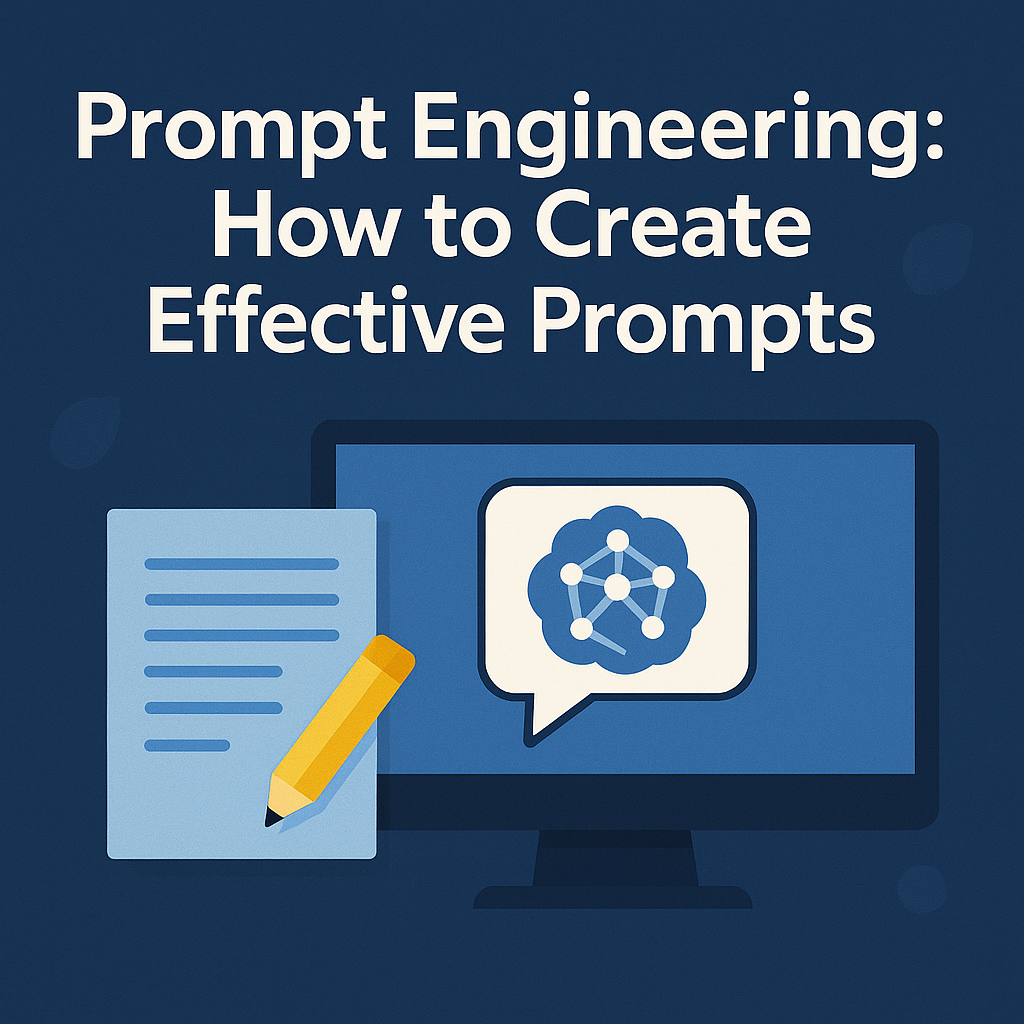Prompt Engineering: How to Create Effective Prompts for Better AI Responses
As artificial intelligence becomes increasingly integrated into our workflows, knowing how to communicate effectively with AI has become a critical skill. Welcome to the world of prompt engineering — the art and science of crafting instructions that guide AI to deliver accurate, useful, and high-quality responses.
Whether you’re generating text with ChatGPT, designing images with DALL·E, or using AI tools in coding, marketing, or customer support, prompt engineering is the key to unlocking better results.
What Is Prompt Engineering?
Prompt engineering involves designing specific, strategic instructions (prompts) that direct AI models to produce your desired output. A well-crafted prompt considers context, clarity, tone, constraints, and goals. This technique helps you reduce irrelevant or vague responses and boosts efficiency.
Why Prompt Engineering Matters in 2025
In 2025, AI isn’t just answering questions—it’s writing articles, generating code, creating graphics, and acting as a decision-support assistant. Businesses and individuals alike are relying on AI across content creation, design, education, cybersecurity, and customer service. Without the right prompt, even the smartest AI can go astray.
Tips to Create Better Prompts
Be Specific, Not Vague
✅ “Write a blog post on the benefits of remote work for startups.”
❌ “Tell me something about work.”
Include Format and Tone
Example: “Write a friendly and professional LinkedIn post in bullet points.”
Use Role Play
Example: “Act as a digital marketing expert and explain SEO basics to a beginner.”
Set Clear Boundaries
“Limit the response to 150 words.”
“Give 3 examples.”
Iterate and Refine
Don’t expect perfection in one try. Rephrase, adjust, and test multiple versions to find the best result.
Common Prompt Formats
Instructional: “Explain how machine learning works.”
Comparative: “Compare Python and JavaScript for web development.”
Creative: “Write a bedtime story for a 7-year-old about a robot who wants to learn painting.”
Analytical: “Summarize the key security risks in cloud computing.”
Tabular/Structured: “Create a table comparing three project management tools.”
Prompt Engineering Use Cases by Industry
| Industry | Prompt Example |
|---|---|
| Education | “Create a 5-question quiz on renewable energy for 10th grade.” |
| Business | “Write a pitch email for a SaaS tool for HR professionals.” |
| Cybersecurity | “List 5 steps to mitigate phishing attacks in remote teams.” |
| Sales & Marketing | “Generate Instagram captions for a product launch.” |
| Web Development | “Generate HTML code for a pricing table with 3 tiers.” |
Tools That Help with Prompting
SkillWarp AI Prompt Courses: Learn how to create prompts that consistently yield great results for text, image, and code-based tasks.
OpenAI Playground: Test prompts live and refine outputs.
Prompt marketplaces: Websites like PromptBase or FlowGPT offer prompt inspiration.
The Future of Prompt Engineering
As AI grows more powerful, prompt engineering will evolve from a niche trick into a core digital skill. Companies are already hiring prompt engineers as part of their AI adoption strategy. In the near future, it may become a required competency like Excel, SEO, or coding.
Want to Master Prompting?
Start building your skills today. Explore SkillWarp’s dedicated course on AI Prompt Engineering to stay ahead of the curve and get more value from AI tools across every industry.




